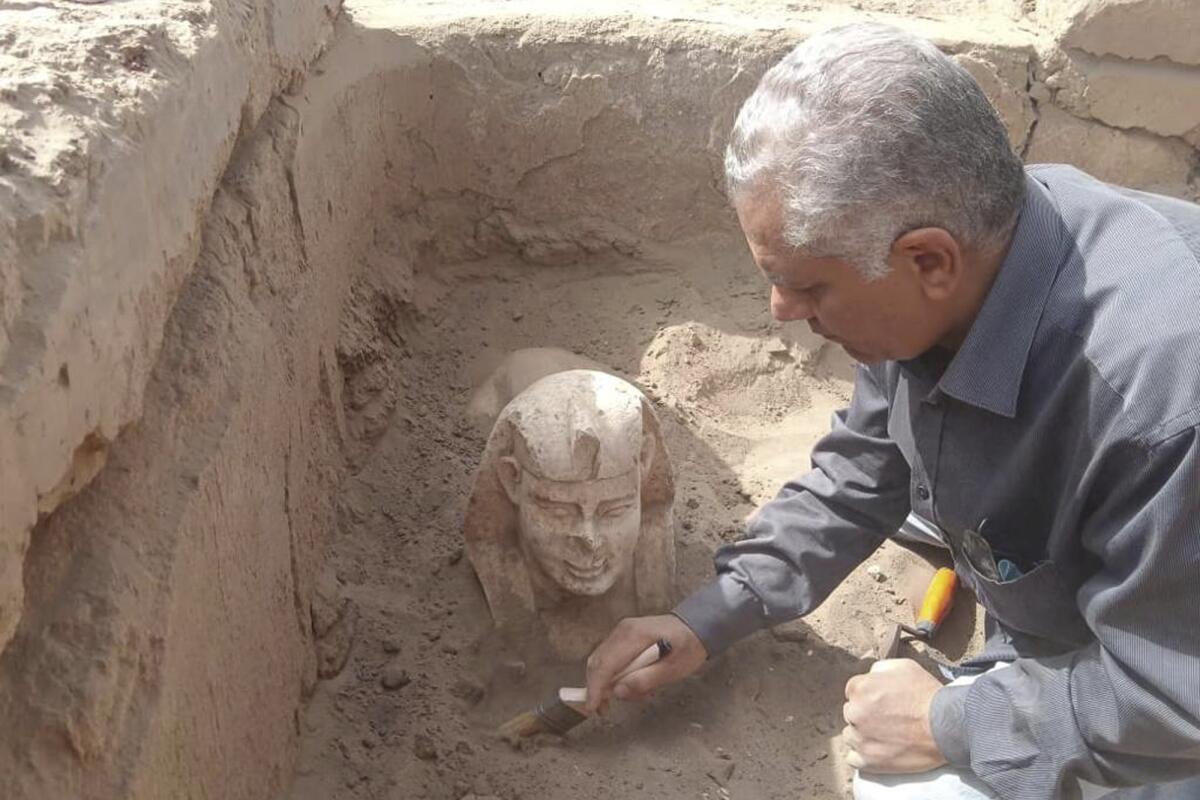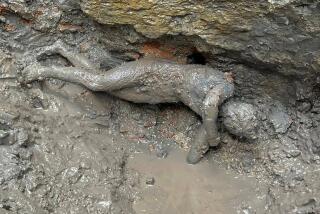Archaeologists in Egypt unearth sphinx-like Roman-era statue

CAIRO — Archaeologists unearthed a sphinx-like statue and the remains of a shrine in an ancient temple in southern Egypt, antiquities authorities said Monday.
The artifacts were found in the temple of Dendera in Qena Province, 280 miles south of the capital of Cairo, the Antiquities Ministry said in a statement.
Archaeologists believe the statue’s smiling features may belong to the Roman emperor Claudius, who extended Rome’s rule into North Africa between 41 and 54 A.D., the ministry said.
It said archaeologists will conduct more studies on the markings on the stone slab, which could reveal more information to the statue’s identity and the area. The statue is much smaller than the towering, well-known sphinx in the pyramids of Giza complex, which is 66 feet high.
The archaeologists also found a Roman-era stone slab with demotic and hieroglyphic inscriptions.
The limestone shrine includes a two-layer platform and a mud-brick basin from the Byzantine era, the ministry said.
Such discoveries are usually touted by the Egyptian government in hopes of attracting more tourists, a significant source of foreign currency for the cash-strapped North African country.
More to Read
Sign up for Essential California
The most important California stories and recommendations in your inbox every morning.
You may occasionally receive promotional content from the Los Angeles Times.










